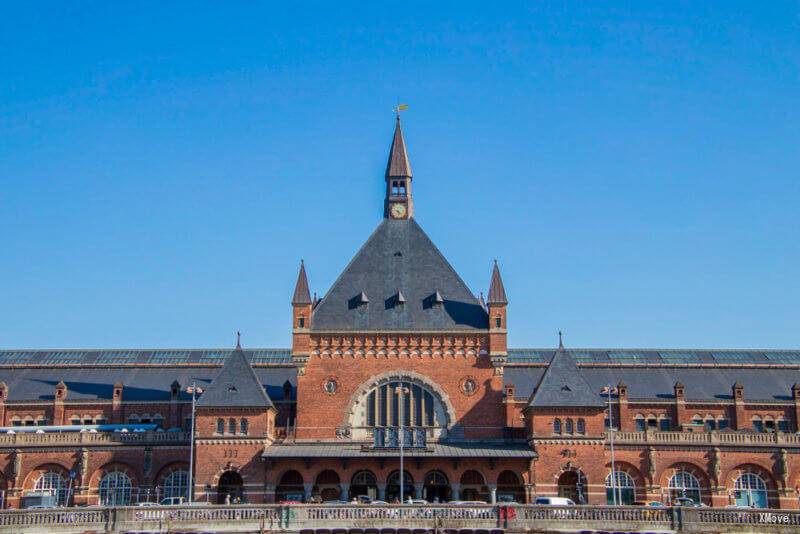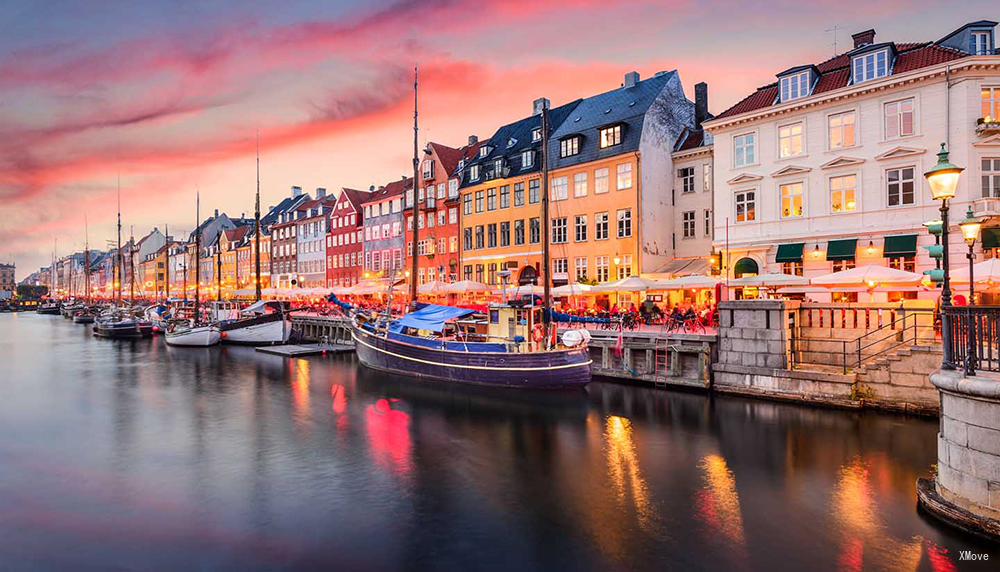Köbenhavn H to Brussels Airport Zaventem: Trains, Buses, Fares, Today's Connections, Routes, Duration, Types of Trains, Station Guides, Tips, Journey
Denmark Train Tickets
Scan QR code, download G2Rail App to see Köbenhavn H's more live update, station guide, plan and photos



Train schedule Köbenhavn H to Brussels Airport Zaventem(Bruxelles National Aéroport(Zaventem))
Popular train routes departing from Köbenhavn H
* Rotterdam Centraal
* Frankfurt Central(Frankfurt(Main)Hbf)
* Essen Central(Essen Hbf)
* Hannover Central(Hannover Hbf)
* Luebeck Hbf(Lübeck Hbf)
* Odense St.
* Kitzbühel Central(Kitzbühel Hbf)
Popular train routes arriving in Köbenhavn H
* Wismar
* Sylt Ost, Sportanlage
* Wuppertal Hbf
* Odense St
* Warendorf
* Hlavní Nádraží V Mannheimu(Mannheim Hbf)
* Hamburské Hlavní Nádraží(Hamburg Hbf)
Popular train routes departing from Brussels Airport Zaventem(Bruxelles National Aéroport(Zaventem))
* Duesseldorf Hbf(Düsseldorf Hbf)
* Baden Baden
* Merchtem
* Erpe Mere
* Mayrhofen Im Zillertal
* Terborg
* Besançon Franche Comté Tgv
Popular train routes arriving in Brussels Airport Zaventem(Bruxelles National Aéroport(Zaventem))
* เดนเดอร์มอนด์(Dendermonde)
* สถานีกลางmülheim (Ruhr)(Mülheim(Ruhr)Hbf)
* เดลฟ์(Delft)
* สถานีกลางบีเลเฟลด์(Bielefeld Hbf)
* Wevelgem
* วอร์ซอ(Warszawa)
* สตราสบูร์ก(Strasbourg)

Köbenhavn H
Located in the city centre, all trains pass through this station or start here. There are many cities in Denmark that can be reached by trains. In addition to the Danish cities, there are also famous cities such as Malmö in Sweden, Hamburg in Germany and Amsterdam in the Netherlands. All light rail express trains (except F line) all pass this site
There are many trains from Copenhagen to various cities in Denmark. There are trains to all parts of the country, including 12 minutes to the airport, and some important attractions, City Hall, pedestrian street, round tower and port are all within walking distance. Going to the little mermaid is relatively far away.
The international route is Copenhagen → Hamburg, passing through Lübeck. Or the night train departs from Copenhagen to Hamburg, Amsterdam, Frankfurt, Dresden, Prague and other places, or express trains to the Nordic cities of Gatpo Stockholm.
Köbenhavn H - Station Guide | Departures and Arrivals | Popular RoutesBrussels Airport Zaventem
Brussels Airport Zaventem - Station Guide | Departures and Arrivals | Popular Routes

Copenhagen (Danish: København [kʰøpm̩ˈhaʊ̯ˀn] ) is the capital and most populous city of Denmark. As of July 2018, the city has a population of 777,218 (616,098 in Copenhagen Municipality, 103,914 in Frederiksberg Municipality, 43,005 in Tårnby Municipality, and 14,201 in Dragør Municipality). It forms the core of the wider urban area of Copenhagen (population 1,320,629) and the Copenhagen metropolitan area (population 2,057,737). Copenhagen is situated on the eastern coast of the island of Zealand; another small portion of the city is located on Amager, and it is separated from Malmö, Sweden, by the strait of Øresund. The Øresund Bridge connects the two cities by rail and road. Originally a Viking fishing village established in the 10th century in the vicinity of what is now Gammel Strand, Copenhagen became the capital of Denmark in the early 15th century. Beginning in the 17th century it consolidated its position as a regional centre of power with its institutions, defences and armed forces. After a plague outbreak and fire in the 18th century, the city underwent a period of redevelopment. This included construction of the prestigious district of Frederiksstaden and founding of such cultural institutions as the Royal Theatre and the Royal Academy of Fine Arts. After further disasters in the early 19th century when Horatio Nelson attacked the Dano-Norwegian fleet and bombarded the city, rebuilding during the Danish Golden Age brought a Neoclassical look to Copenhagen's architecture. Later, following the Second World War, the Finger Plan fostered the development of housing and businesses along the five urban railway routes stretching out from the city centre. Since the turn of the 21st century, Copenhagen has seen strong urban and cultural development, facilitated by investment in its institutions and infrastructure. The city is the cultural, economic and governmental centre of Denmark; it is one of the major financial centres of Northern Europe with the Copenhagen Stock Exchange. Copenhagen's economy has seen rapid developments in the service sector, especially through initiatives in information technology, pharmaceuticals and clean technology. Since the completion of the Øresund Bridge, Copenhagen has become increasingly integrated with the Swedish province of Scania and its largest city, Malmö, forming the Øresund Region. With a number of bridges connecting the various districts, the cityscape is characterised by parks, promenades and waterfronts. Copenhagen's landmarks such as Tivoli Gardens, The Little Mermaid statue, the Amalienborg and Christiansborg palaces, Rosenborg Castle Gardens, Frederik's Church, and many museums, restaurants and nightclubs are significant tourist attractions. The largest lake of Denmark, Arresø, lies around 27 miles (43 kilometers) northwest of the City Hall Square. Copenhagen is home to the University of Copenhagen, the Technical University of Denmark, Copenhagen Business School and the IT University of Copenhagen. The University of Copenhagen, founded in 1479, is the oldest university in Denmark. Copenhagen is home to the FC København and Brøndby football clubs. The annual Copenhagen Marathon was established in 1980. Copenhagen is one of the most bicycle-friendly cities in the world. The Copenhagen Metro launched in 2002 serves central Copenhagen. The Copenhagen Metro is scheduled to expand radically with the opening of the City-ring line during fall 2019, the new line will connect all inner boroughs of the city by metro, including The Central Station, and will open up 17 new stations for Copenhageners. The new metro line is a part of the city's strategy to transform mobility towards sustainable modes of transport such as public transport and cycling as opposed to automobility. Additionally the Copenhagen S-train, the Lokaltog (private railway) and the Coast Line network serves and connects central Copenhagen to outlying boroughs. The Copenhagen-Ringsted Line will relieve traffic congestion in the corridor between Roskilde and Copenhagen. Serving roughly two million passengers a month, Copenhagen Airport, Kastrup, is the busiest airport in the Nordic countries.
Copenhagen - Guide, Attractions, Tours, Sightseeings | Train from/to Copenhagen | Popular RoutesBrussels Airport (IATA: BRU, ICAO: EBBR) (also called Brussel-Nationaal / Bruxelles-National (Brussels-National) or Zaventem) is an international airport 6.5 NM (12.0 km; 7.5 mi) northeast of Brussels, the capital of Belgium. In 2018, more than 25 million passengers arrived or departed at Brussels Airport, making it the 24th busiest airport in Europe. It is located partially in Zaventem, partially in the Diegem area of Machelen, and partially in Steenokkerzeel, in the Flemish Region of Belgium. It is home to around 260 companies, together directly employing 20,000 people and serves as the home base for Brussels Airlines and TUI fly Belgium. The company operating the airport is known as The Brussels Airport Company N.V./S.A.; before 19 October 2006, the name was BIAC (Brussels International Airport Company), which was created by Belgian law through a merger of BATC with the ground operations departments of the RLW/RVA. Since 2011, the airport has been owned by the Toronto-based Ontario Teachers' Pension Plan (39%), Macquarie Group (Macquarie European Infrastructure Fund I and Macquarie European Infrastructure Fund III) (36%) and the Belgian State (25%).On 22 March 2016 the airport's departures hall was severely damaged by two terrorist bomb blasts. The airport was closed until 3 April 2016, when it reopened with temporary facilities at less than 20% of its previous capacity. It has since returned to full operations, with a record of 90,000 passengers on 29 July 2016.
Brussels Airport - Guide, Attractions, Tours, Sightseeings | Train from/to Brussels Airport | Popular Routes
Denmark Train Tickets
Scan QR code, download G2Rail App to see Köbenhavn H's more live update, station guide, plan and photos



Hot Journeys
* Florence -> Pisa
* Munich(Müchen) -> Dusseldorf(Düsseldorf)
* Avignon -> Paris
* Rome(Roma) -> Venice(Venezia)
* Nice -> Paris
* Cologne(Köln) -> Frankfurt
* Lucerne(Luzern) -> Arth
* Berlin(Berlin) -> Munich(Müchen)
* Warsaw(Warszawa) -> Krakow(Kraków)
